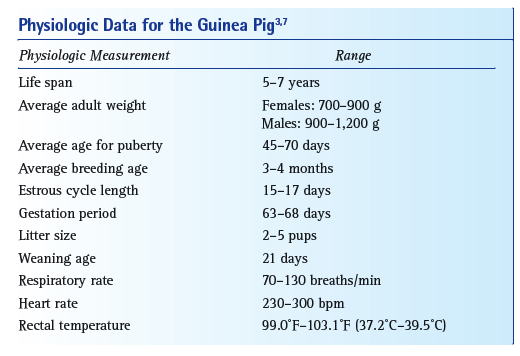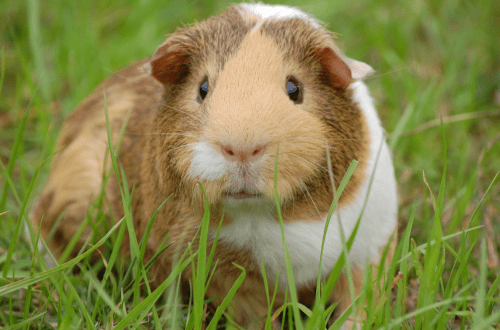
Antibiotics and guinea pigs
Sometimes guinea pigs require antibiotics, but their use carries an element of risk. Even the most “safe” drugs can have toxic effects, hence the basic rule is that any antimicrobials should be prescribed only in case of a real bacterial infection or a serious threat of its development. The following will discuss the risks of giving antibiotics to guinea pigs and how you can minimize them.
Contents
- Why are antibiotics dangerous?
- Antibiotic rules
- Drugs that are toxic to guinea pigs
- Methods of administration of antibacterial drugs
- Negative effects of antibiotics and how to avoid them
- Why are antibiotics dangerous?
- Antibiotic rules
- Drugs that are toxic to guinea pigs
- Methods of administration of antibacterial drugs
- Negative effects of antibiotics and how to avoid them
Why are antibiotics dangerous?
Guinea pigs are herbivores and therefore have a complex digestive system. The fact is that mammals on their own cannot completely process plant foods, this work is performed by the microorganisms inhabiting the digestive tract: bacteria and some protozoa. They, due to their enzymes, break down plant fibers into substances that are already absorbed in the intestines of the animal. The real danger comes when an antibacterial drug enters the digestive tract. Along with the pathogenic microflora, it also kills the beneficial one, and the animal is unable to digest plant foods, and indigestion occurs in the form of diarrhea. It should be noted that beneficial microflora is usually more sensitive to antibiotics, and if its number decreases, the vacant niche is occupied by various pathogenic microflora, often more resistant. Hence the conclusion follows: you should not prescribe antibacterial drugs to guinea pigs “just in case”, without a serious reason, this can lead to extremely undesirable consequences, up to the death of the animal.
In any case, antibacterial drugs should be prescribed by a veterinarian and used under his supervision.
Some antibacterial drugs are dangerous for the animal, because. have a number of side effects. In addition, some animals show individual sensitivity to drugs, up to intolerance and severe allergic reactions.
Antibiotic rules
Antibacterial drugs should have an effect after 2-3 days from the start of administration. Sometimes it happens faster, after 12 hours, but in any case, the condition of the animal SHOULD NOT WORSE!
If after 48-72 hours there is no response to antibiotics and if there is evidence that the animal has a BACTERIAL infection, then the antibiotic is recommended to be changed. However, it is highly undesirable to frequently change drugs in order to avoid the development of resistance in bacteria to them. But whatever antibiotic is used, it is important to adhere to the correct dosage, both an overdose and an insufficient amount are equally undesirable.
If material is taken to determine the causative agent of the disease, then the laboratory not only identifies the microorganism, but also determines its sensitivity to antibiotics. But only a veterinarian chooses from the list of effective drugs that are the safest for guinea pigs.
Drugs that are toxic to guinea pigs
Some drugs used in the treatment of humans and other animals without much harm to their health, however, can be dangerous for guinea pigs. The following is a list of the most common drugs, but it does not claim to be exhaustive:
- amoxicillin
- bacitracin
- chlortetracycline
- clindamycin
- erythromycin
- lincomycin
- oxytetracycline
- penicillin
- streptomycin
Loss of appetite, diarrhea, lethargy, which developed after the start of antibiotic use, indicate that the animal has an individual sensitivity to the drug. The result of this reaction can be fatal. In this case, it is necessary to cancel the drug and, if treatment is still necessary, replace it with another one.
Methods of administration of antibacterial drugs
Antimicrobials can be administered in two ways: oral (by mouth) and oral (by injection). Both methods have their pros and cons.
Oral antibacterials for animals are often available in the form of a pleasant-tasting suspension so that guinea pigs accept them without resistance. Such drugs are measured with a syringe without a needle, the cannula of the syringe is inserted into the animal’s mouth from the side behind the incisors and the piston is gently pressed so that the guinea pig can swallow the drug.
Oral antibiotics are easy to administer to the animal, but they have a negative effect on the digestive tract, as they come into direct contact with the intestinal microflora.
Injecting drugs to guinea pigs requires a certain skill. Most antibiotics are injected intramuscularly into the thigh muscles, but the skin of guinea pigs is quite thick and requires some force to insert the needle. Most gilts squeal when the needle is inserted and will usually try to run away.
The introduction of antibacterial drugs parenterally has a lesser negative effect on the digestive system of pigs, because. the drug does not come into direct contact with the microflora before being absorbed into the blood. But this method poses a serious problem for owners who are afraid to “stab” their pets with needles. You can make the task easier if you first wrap the animal in a towel, leaving only the back of the body free.
Negative effects of antibiotics and how to avoid them
Even “safe” antibiotics are toxic to guinea pigs, especially if the animal is under stress. The following are symptoms that indicate that this animal has an intolerance to an antibacterial drug:
- diarrhea
- depression
- decreased activity/lethargy
- loss of appetite
There are several ways to reduce the negative impact of antibacterial drugs on the body of guinea pigs.
Probiotics are bacterial preparations containing cultures of beneficial bacteria that have an antagonistic effect on harmful flora, and in addition, replenish the microflora that died under the action of antibiotics. Unfortunately, drugs used to treat humans (bifidumbacterin, lactobacterin, linex, etc.) are not very suitable for animals, including guinea pigs, and often they are not effective enough.
Such drugs are administered orally, after diluting with boiled water, from a syringe. If the animal is prescribed oral antibiotics, then the interval between taking these two drugs should be at least 1 hour. If antibiotics are administered parenterally, no waiting time is required.
The ideal source of normal microflora for pigs is, oddly enough, the litter of healthy animals, diluted with water. The suspension, of course, is also administered orally.
Diet food. Timothy hay, or any grass-fed hay that is high in fiber, helps to maintain optimal intestinal health in guinea pigs. Therefore, for the period of treatment, the animal should have as much hay as it can eat.
Comfortable conditions. Stress and antibiotics are a dangerous combination. As far as possible, reduce the effect of stress factors on the animal: do not change the diet and do not introduce new foods, do not change the environment, i.e. room, cage, etc., maintain the optimum temperature in the room.
All of the above does not guarantee that your animal will survive antibiotic treatment without complications, but it will still help to minimize the possible risk. But remember, in case of any difficulties that arise, contact an experienced veterinarian immediately.
Sometimes guinea pigs require antibiotics, but their use carries an element of risk. Even the most “safe” drugs can have toxic effects, hence the basic rule is that any antimicrobials should be prescribed only in case of a real bacterial infection or a serious threat of its development. The following will discuss the risks of giving antibiotics to guinea pigs and how you can minimize them.
Why are antibiotics dangerous?
Guinea pigs are herbivores and therefore have a complex digestive system. The fact is that mammals on their own cannot completely process plant foods, this work is performed by the microorganisms inhabiting the digestive tract: bacteria and some protozoa. They, due to their enzymes, break down plant fibers into substances that are already absorbed in the intestines of the animal. The real danger comes when an antibacterial drug enters the digestive tract. Along with the pathogenic microflora, it also kills the beneficial one, and the animal is unable to digest plant foods, and indigestion occurs in the form of diarrhea. It should be noted that beneficial microflora is usually more sensitive to antibiotics, and if its number decreases, the vacant niche is occupied by various pathogenic microflora, often more resistant. Hence the conclusion follows: you should not prescribe antibacterial drugs to guinea pigs “just in case”, without a serious reason, this can lead to extremely undesirable consequences, up to the death of the animal.
In any case, antibacterial drugs should be prescribed by a veterinarian and used under his supervision.
Some antibacterial drugs are dangerous for the animal, because. have a number of side effects. In addition, some animals show individual sensitivity to drugs, up to intolerance and severe allergic reactions.
Antibiotic rules
Antibacterial drugs should have an effect after 2-3 days from the start of administration. Sometimes it happens faster, after 12 hours, but in any case, the condition of the animal SHOULD NOT WORSE!
If after 48-72 hours there is no response to antibiotics and if there is evidence that the animal has a BACTERIAL infection, then the antibiotic is recommended to be changed. However, it is highly undesirable to frequently change drugs in order to avoid the development of resistance in bacteria to them. But whatever antibiotic is used, it is important to adhere to the correct dosage, both an overdose and an insufficient amount are equally undesirable.
If material is taken to determine the causative agent of the disease, then the laboratory not only identifies the microorganism, but also determines its sensitivity to antibiotics. But only a veterinarian chooses from the list of effective drugs that are the safest for guinea pigs.
Drugs that are toxic to guinea pigs
Some drugs used in the treatment of humans and other animals without much harm to their health, however, can be dangerous for guinea pigs. The following is a list of the most common drugs, but it does not claim to be exhaustive:
- amoxicillin
- bacitracin
- chlortetracycline
- clindamycin
- erythromycin
- lincomycin
- oxytetracycline
- penicillin
- streptomycin
Loss of appetite, diarrhea, lethargy, which developed after the start of antibiotic use, indicate that the animal has an individual sensitivity to the drug. The result of this reaction can be fatal. In this case, it is necessary to cancel the drug and, if treatment is still necessary, replace it with another one.
Methods of administration of antibacterial drugs
Antimicrobials can be administered in two ways: oral (by mouth) and oral (by injection). Both methods have their pros and cons.
Oral antibacterials for animals are often available in the form of a pleasant-tasting suspension so that guinea pigs accept them without resistance. Such drugs are measured with a syringe without a needle, the cannula of the syringe is inserted into the animal’s mouth from the side behind the incisors and the piston is gently pressed so that the guinea pig can swallow the drug.
Oral antibiotics are easy to administer to the animal, but they have a negative effect on the digestive tract, as they come into direct contact with the intestinal microflora.
Injecting drugs to guinea pigs requires a certain skill. Most antibiotics are injected intramuscularly into the thigh muscles, but the skin of guinea pigs is quite thick and requires some force to insert the needle. Most gilts squeal when the needle is inserted and will usually try to run away.
The introduction of antibacterial drugs parenterally has a lesser negative effect on the digestive system of pigs, because. the drug does not come into direct contact with the microflora before being absorbed into the blood. But this method poses a serious problem for owners who are afraid to “stab” their pets with needles. You can make the task easier if you first wrap the animal in a towel, leaving only the back of the body free.
Negative effects of antibiotics and how to avoid them
Even “safe” antibiotics are toxic to guinea pigs, especially if the animal is under stress. The following are symptoms that indicate that this animal has an intolerance to an antibacterial drug:
- diarrhea
- depression
- decreased activity/lethargy
- loss of appetite
There are several ways to reduce the negative impact of antibacterial drugs on the body of guinea pigs.
Probiotics are bacterial preparations containing cultures of beneficial bacteria that have an antagonistic effect on harmful flora, and in addition, replenish the microflora that died under the action of antibiotics. Unfortunately, drugs used to treat humans (bifidumbacterin, lactobacterin, linex, etc.) are not very suitable for animals, including guinea pigs, and often they are not effective enough.
Such drugs are administered orally, after diluting with boiled water, from a syringe. If the animal is prescribed oral antibiotics, then the interval between taking these two drugs should be at least 1 hour. If antibiotics are administered parenterally, no waiting time is required.
The ideal source of normal microflora for pigs is, oddly enough, the litter of healthy animals, diluted with water. The suspension, of course, is also administered orally.
Diet food. Timothy hay, or any grass-fed hay that is high in fiber, helps to maintain optimal intestinal health in guinea pigs. Therefore, for the period of treatment, the animal should have as much hay as it can eat.
Comfortable conditions. Stress and antibiotics are a dangerous combination. As far as possible, reduce the effect of stress factors on the animal: do not change the diet and do not introduce new foods, do not change the environment, i.e. room, cage, etc., maintain the optimum temperature in the room.
All of the above does not guarantee that your animal will survive antibiotic treatment without complications, but it will still help to minimize the possible risk. But remember, in case of any difficulties that arise, contact an experienced veterinarian immediately.





